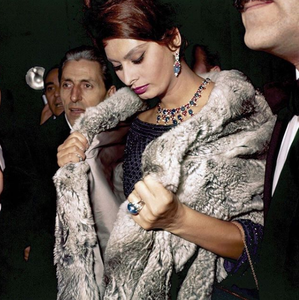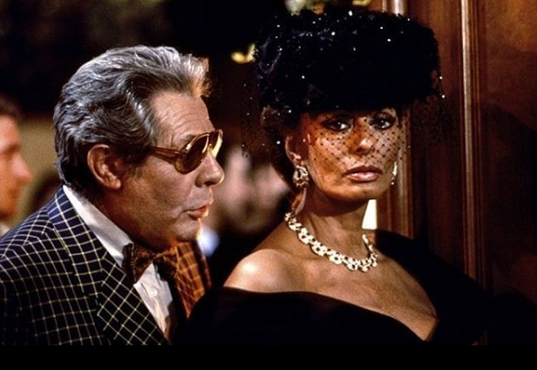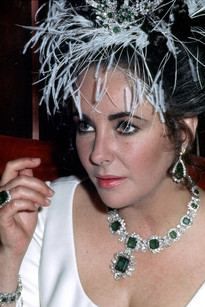Exhibition: Bvlgari (Moscow, 2018)
- Katerina
- 5 дек. 2020 г.
- 4 мин. чтения
Fashion is not only clothes but also accessories. Our favorite accessories are jewelry, and the best jewelry is precious jewelry!
Since I can't travel and visit new fashion exhibitions, I will write about the previously visited ones. In this post, I will tell you about the retrospective exhibition of high-end jewelry pieces of the world-famous Roman jewelry house Bvlgari “Tribute to Femininity. Magnificent Roman Jewels", which I was lucky enough to visit in October 2018 at the Moscow Kremlin Museums. The exhibition was attended by over 220 thousand people, and it has become one of the most visited jewelry exhibitions in the history of the museum.
The luxurious art objects were collected not only from the Bvlgari Heritage Collection but also from the world's private collections, which were on display for the first time. This is the first Bvlgari exhibition in Russia and the largest in the history of the jewelry house. The atmosphere of luxury in the Bvlgari world was enhanced by lighting and video installations.
In two exhibition halls, more than 500 masterpieces of the jewelry house were presented, from the early silver pieces created by Sotirio Bulgari, the founder of the brand, in the late 19th century, to the extraordinary creations of the late 20th century.
The exhibits demonstrated the evolution of jewelry design over more than a century of the brand's history against the backdrop of changing women's jewelry preferences during the development of emancipation.
The change in the position of women in society in the 1920s inspired the house to design new pieces of art deco jewelry: wide bracelets and long sautoirs with geometric motifs, transformer jewelry that turned a tiara into a necklace, and pendants into a brooch.
Platinum necklace with diamonds (1930s) :
The theme of femininity was revealed by iconic jewelry that belonged to famous Bvlgari clients. The tiara with aquamarines and diamonds, which the Spanish Infanta Beatrice wore on her wedding day in 1935, was shown for the first time.

After World War II, when European women wanted to dress up again and were ready for bright colors, Bvlgari redefined jewelry designs. The brand developed its unique style: a combination of precious and semi-precious stones and unexpected color combinations. At that time, the main muses of the Bvlgari house were the movie stars. Among the clients of the jewelry house were Ingrid Bergman, Monica Vitti, Sophia Loren, Gina Lollobrigida, Anna Magnani, Audrey Hepburn, and Elizabeth Taylor. Many of them loved to wear custom-made jewelry on film sets. A separate section of the exhibition was devoted to film stars.
Monica Vitti wearing Bvlgari:
Ingrid Bergman in The Visit (1964) wearing Bvlgari:

Sophia Loren in a necklace Bvlgari, 1960s:
Sophia Loren wearing a necklace and earrings made of gold with diamonds, for Vogue, 1992:
Gina Lollobrigida wearing Seven Wonders earrings and a necklace made of platinum with diamonds and emeralds:
Sophia Loren wearing Bvlgari jewelry on the set of Prêt-à-Porter (1994):
Anna Magnani brooch made of diamonds and rubies:
Another impressive exhibit owned by Anna Magnani and exhibited for the first time is the Trombino ring with a diamond of over 25 carats:
The complete collection of jewelry by one of Bvlgari's most loyal fans, Elizabeth Taylor, is the pride of the Jewelry House. Richard Burton, the actress's husband, said that the only Italian word Elizabeth knew was Bvlgari. He presented her many pieces of Bvlgari jewelry, including a necklace with 17 Colombian emeralds, which she wore when she won the Oscar for Best Actress in Who's Afraid of Virginia Woolf?, and a sautoir with a cone-shaped sapphire weighing over 60 carats and diamonds, which he gave her for her 40th birthday. These pieces of jewelry were presented at the exhibition.
Tremblant brooch made of platinum, emeralds and diamonds:
Mirror owned by Elizabeth Taylor:

Elizabeth Taylor's jewelry now belongs to the Bvlgari heritage collection. The Jewelry House provides vintage jewelry from the heritage collection to celebrities for iconic public events.
The exhibition also featured gold handbags and a powder box of my dreams - made of gold with rubies and diamonds (1952).
Other exhibits (for more photos please press the arrow to the right):
One of the sections of the exhibition demonstrated the iconic lines of the jewelry house's collections. The Parentesi collection, consisting of modules with silk cords and stones from coral to diamonds, which made it possible to compose jewelry at the request of the client.
Gold necklace with silk cord, rubies, sapphires, diamonds, onyx, 1980s:

Chandra collection with white porcelain, gold and tourmaline beads.
Monete collection with antique Greco-Roman coins. Tubogas choker necklace in gold with silver coins 350-306 BC, 1974, and sautoir with Byzantine gold coins and diamonds from the collection of Elizabeth Taylor, 1975:
Serpenti jewelry made using the Tubogas technique, representing wisdom, vitality, and immortality through the symbol of the snake.
The collections were created at different times, during different historical events, but jewelry was always intended for free and independent women. It was this theme that the exhibition covered.
It was my first trip to Moscow, the fourth day of active exploration of the capital. In the last hall of the exhibition, I said - "This was the best thing that I have seen in Moscow!" A year later, I went to Moscow for a couple of days, again went around many sights that I had not visited the first time. And I still haven't changed my mind: this exhibition is the best I have seen in Moscow!























































































































Comments